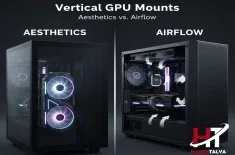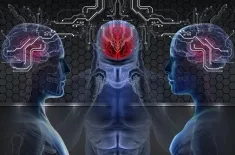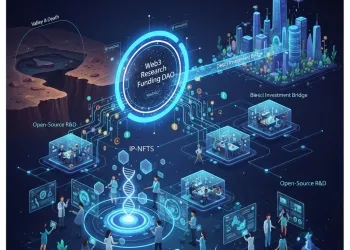Demystifying qubit technology and the NISQ era. Learn about quantum supremacy, quantum security threat (Shor's algorithm), and post-quantum cryptography.
The journey of quantum computing is currently navigating a distinct phase often termed the Quantum Computing Hype Cycle. Fueled by breathtaking theoretical potential, the field promises to revolutionize medicine, materials science, and cryptography. Yet, the current reality is defined by the NISQ era—a phase of imperfect, noisy devices. Understanding the difference between the science-fiction vision of unbounded power and the current state of qubit technology is essential for appreciating the true, incremental progress being made.
The Core Concepts: Beyond Classical Limits
To grasp the significance of quantum computing, one must first understand its foundational difference from classical computing.
Qubit Technology: Superposition and Entanglement
Classical computers use bits that store information as either 0 or 1. Quantum computers use qubit technology, which exploits two core quantum phenomena:
- Superposition: A qubit can exist in a combination of both 0 and 1 simultaneously. If a classical system requires 2^n states to be checked sequentially, a quantum system with n qubits can process all 2^n states concurrently. This exponential increase in processing capacity is the source of quantum computing's theoretical power. Shutterstock
- Quantum Entanglement: This is often described as "spooky action at a distance." When two qubits are entangled, they become linked such that the state of one instantly influences the state of the other, regardless of the physical distance between them. This correlation allows quantum computers to execute complex, simultaneous calculations that would be impossible classically.
Defining Quantum Supremacy
Quantum supremacy (sometimes called quantum advantage) is the milestone where a quantum computer performs a calculation that a classical supercomputer cannot perform in a reasonable amount of time. While this milestone has been theoretically claimed by certain research labs for highly specific, non-practical problems, achieving true, useful quantum supremacy for real-world commercial problems (like drug discovery or materials science) remains the ultimate goal.
The Current Reality: The NISQ Era
The field is currently deep within the NISQ era, which stands for Noisy Intermediate-Scale Quantum. This term perfectly captures the present limitations of qubit technology.
Characteristics of the NISQ Era
The quantum machines of the NISQ era possess tens to hundreds of qubits (intermediate-scale), but these qubits are extremely sensitive to environmental noise (noisy). This means they suffer from high error rates and short coherence times (the time they can maintain their quantum state). The result is that while these devices are capable of complex operations, the errors rapidly accumulate, severely limiting the length and complexity of calculations they can reliably perform.
Bridging the Gap: Theoretical Power vs. Practicality
The gap between theoretical power and practical application is vast. Algorithms like Shor's or Grover's, which promise exponential speed-ups, require thousands or even millions of high-quality, fault-tolerant qubits. The noisy, error-prone nature of current NISQ era hardware prevents the reliable execution of these complex algorithms. Researchers are therefore focused on developing NISQ era-specific algorithms that can tolerate high noise and maximize the limited capabilities of today's systems (e.g., variational quantum algorithms).
The Quantum Security Threat (Shor's Algorithm)
The single most impactful future application of quantum computing is a destructive one, which is currently driving massive global investment in security.
The Quantum Security Threat (Shor's algorithm)
In 1994, mathematician Peter Shor developed an algorithm that, when run on a large-scale, fault-tolerant quantum computer, could efficiently solve the problem of factoring large numbers. This capability poses a direct quantum security threat (Shor's algorithm) because the security of nearly all modern public-key cryptography (RSA, ECC, etc.) relies on the difficulty of factoring large numbers. If a quantum computer can break this difficulty, the digital security infrastructure of the world—including banking, military, and government secrets—would be vulnerable.
The Race to Post-Quantum Cryptography
The inevitability of the quantum security threat (Shor's algorithm) has initiated a global race to develop and implement post-quantum cryptography (PQC). PQC refers to new cryptographic algorithms that are secure against both classical and quantum attacks. Organizations like the US National Institute of Standards and Technology (NIST) have standardized several PQC algorithms, initiating a critical "crypto-agility" phase where organizations must prepare their systems for the migration to quantum-safe encryption. The need for post-quantum cryptography is urgent, not because fault-tolerant quantum computers exist today, but because encrypted data captured today could be stored and decrypted by a future quantum computer (a "harvest now, decrypt later" attack).
Conclusion: Navigating the Hype Cycle
The hype surrounding quantum computing is justified by its theoretical promise, but the reality is currently grounded in the incremental, painstaking work of the NISQ era. The challenge is not just scaling qubit technology, but developing robust quantum error correction to move from noisy to fault-tolerant machines. While useful quantum supremacy for drug discovery is still years away, the quantum security threat (Shor's algorithm) is immediate, forcing the rapid transition to post-quantum cryptography. Navigating this hype cycle requires balancing futuristic visions with the focused engineering and scientific breakthroughs necessary to realize the quantum revolution.





































